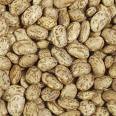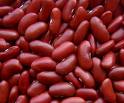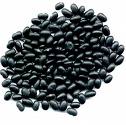MANY USES
Beans are incredibly versatile and can be used in a wide variety of dishes- appetizers, salads, side and main dishes, soups and stews, casseroles, and even desserts. There are many cookbooks available featuring a wide variety of delicious recipes using beans. Try some of the recipes linked here and look through your cookbooks at home and take advantage of this nutritional powerhouse!
These are images of some of the beans I like to cook with:

Pinto Beans
|

White Beans
|

Red Kidney Beans
|

Black Beans
|

Lentil Beans
|
WHAT IS THE NUTRITIONAL VALUE OF BEANS?

Beans have been called the "near-perfect" food- a nutritional powerhouse.

Beans are chock-full of complex carbohydrates, protein, dietary fiber, and also vitamins and minerals.

Beans are among the richest sources of several B-complex vitamins, including thiamine, niacin, riboflavin, B6 and folic acid, and some contain Vitamin A.

In general, beans are rich in iron, calcium, phosphorous, zinc, and potassium.

Beans have no cholesterol and minimal fat.

Compared to other high-protein foods, beans are low in calories- on average a cup of beans provides 225 calories.

Eating meals rich in beans can help people on weight reduction diets. Beans are digested slowly, so they help you feel full longer.

Beans provoke a lower insulin response than do other carbohydrates and can be a real help to diabetics and hypoglycemics.

Some studies have shown that legumes can help control blood cholesterol by fighting the deposit of platelets in veins and arteries. Bean's soluble fiber is linked to a reduction of the "bad" cholesterol (LDL).

Current research suggests that eating beans is beneficial in terms of cardiovascular health and cancer prevention.

Isn't the bean amazing???
MEASUREMENTS

Dry beans
triple in volume when soaked and cooked.

1 lb dry beans= about 2 cups dry beans= about 6 cups soaked and cooked beans.

One 20-ounce can cooked beans= about 2 cups, drained.

1 pound lentils= 2 1/3 cups uncooked lentils.

1 cup dry beans, soaked and cooked, serves 4 people as a side dish or as part of a main dish when combined with other ingredients.
WAYS TO REDUCE GAS?
Gas can be traced to the small amount of complex sugars in beans. Since humans lack the enzyme necessary to digest these sugars, the bacteria in the lower intestine break them down, producing gas. So how do I reduce gas in my beans?

Proper soaking and cooking can rid beans of up to 90% of their gas-producing potential. Don't cook beans in their soaking water since that's where the gas-producing sugars hide.

Drain and rinse canned beans thoroughly to rid them of a portion of the gas-producing sugar as well as excess sodium.

"Beano"- add a few drops of this liquid enzyme to your first bite of beans. This food enzyme breaks down the indigestible sugars in the beans.

If you're not used to eating beans, start gradually by adding 1/2 c. servings of legumesto your diet 1 or 2 times per week. Beans are most problematic for people who don't eat them often.

Lentils, black-eyed peas, lima beans, garbanzo beans, and white beans are considered by some people to be "less gassy."





